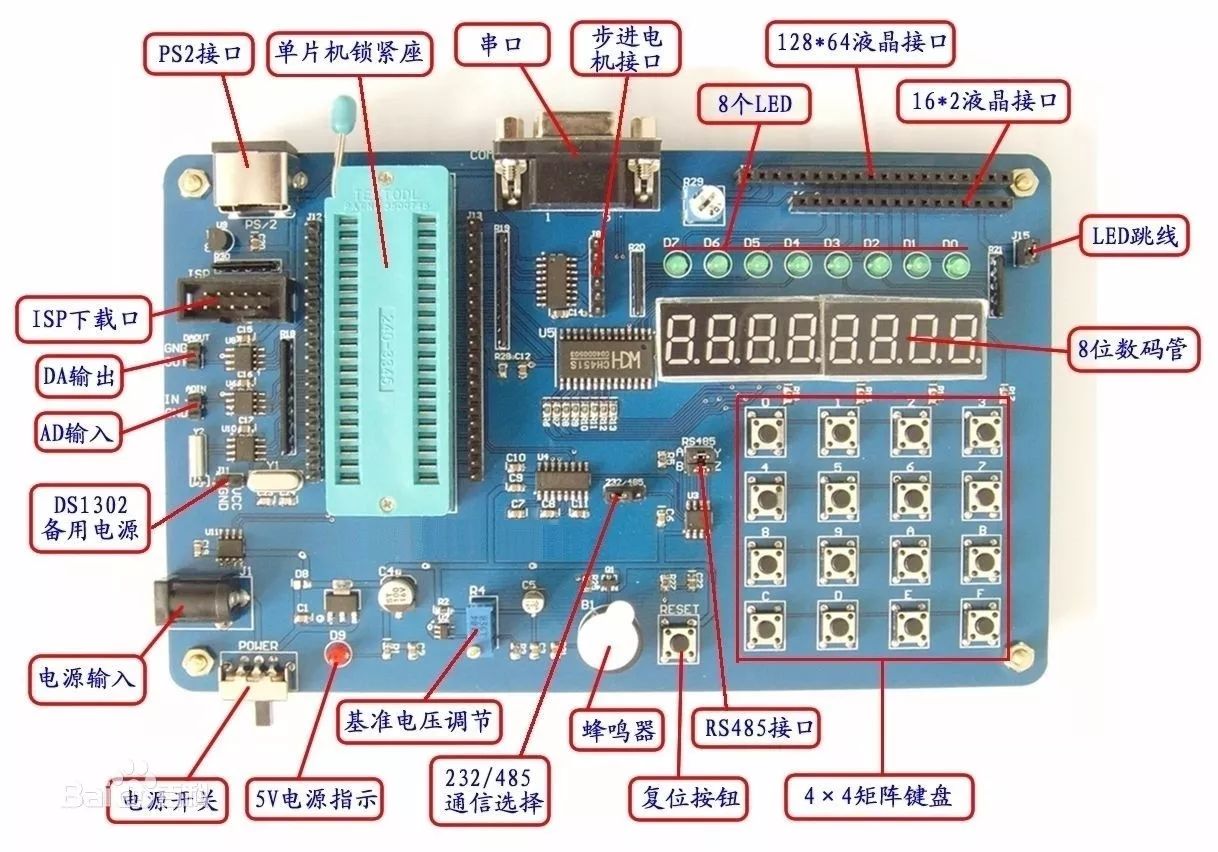What is the microcontroller? Simply put, it is a microcomputer system. However, the sparrow is small and complete. The MCU uses a lot of modules similar to the computer functions, such as CPU, memory, parallel bus, memory for storing data, etc., which exist in the MCU, but the difference is that the performance of these components is much weaker than the computer, of course, the price It is also relatively low. We can use it to do some work that is not very complicated to control electrical appliances. It is primarily a core component of the electronics control segment. What is the crystal oscillator of the single chip? What if there is no crystal oscillator in the one-chip computer?
The crystal oscillator of the single-chip microcomputer is the electronic component of the clock frequency required by the internal circuit of the single-chip microcomputer. The higher the clock frequency provided by the single-chip crystal oscillator, the faster the running speed of the single-chip microcomputer. The execution of all instructions connected to the single-chip microcomputer is based on the clock provided by the crystal oscillator. frequency. This shows the importance of the crystal oscillator in the microcontroller. Usually a single-chip system shares a crystal to facilitate synchronization of the various parts. Some communication systems use different crystals for the fundamental frequency and RF. We can keep the synchronization by electronically adjusting the frequency. The main role of the crystal oscillator in a microcontroller system is to provide a basic clock signal to the system. The crystal oscillator is typically used in conjunction with a phase-locked loop circuit to provide the clock frequency required by the system. If different subsystems require clock signals of different frequencies, they can be provided by different phase-locked loops connected to the same crystal.
Therefore, there is no crystal oscillator in the single-chip microcomputer, and there is no clock cycle. Without the clock cycle, the program code cannot be executed, the microcontroller cannot work, and the program cannot be burned. Because the MCU works, it fetches instructions from RoM one by one, and then executes them step by step. We refer to the time that the microcontroller accesses the memory once as a machine cycle, which is a time base. A machine cycle consists of 12 clock cycles. If a microcontroller selects a 12 MHz crystal, its clock period is 1/12us, and its one machine cycle is 12 × (1/12) us, which is 1us. Machine cycles are not only important for instruction execution, but machine cycles are also the time base for microcontroller timers and counters. If a single-chip selects a 12MHz crystal oscillator (this crystal oscillator can be a 49S plug-in crystal, it can also be a patch crystal), then when the value of the timer is increased by 1, the actual elapsed time is 1us, which is the timing principle of the microcontroller.

After using our computer for a period of time, there will always be such a problem. It may be a serious situation such as the motherboard, CPU, and power supply being burned out. Of course, it may be that the memory module is loose and a crystal oscillator on the motherboard is damaged. Even for a long time, there are no small problems such as cleaning up dust. We have no way to solve big problems. We can only send them for repair, but these small problems are believed to be easy for us to solve. The MCU is the same. If the MCU cannot be started, don't think that it is broken, just throw it away. In many cases, the MCU can't work. There is a problem with the quartz crystal. At this point we can use a simple method to measure whether the crystal is damaged. The method is very simple. We use a multimeter to measure whether the two pins of the crystal oscillator are half of the working voltage of the chip. For example, if the working voltage of the 51 MCU is +5V, then we measure whether it is about 2.5V. In addition, if you touch the other foot of the crystal with a tweezers, if the voltage changes significantly, it proves that the crystal is oscillating. On the contrary, the crystal oscillator has been damaged. We only need to replace the crystal oscillator to use the microcontroller again.
Optoelectronic Information Series
Photoelectric information series laboratory related equipment
Optoelectronic Information Product,Optical Bench Experiments Physics,Optical Devices Physics,Optical Physics Properties
Yuheng Optics Co., Ltd.(Changchun) , https://www.yuhengcoder.com